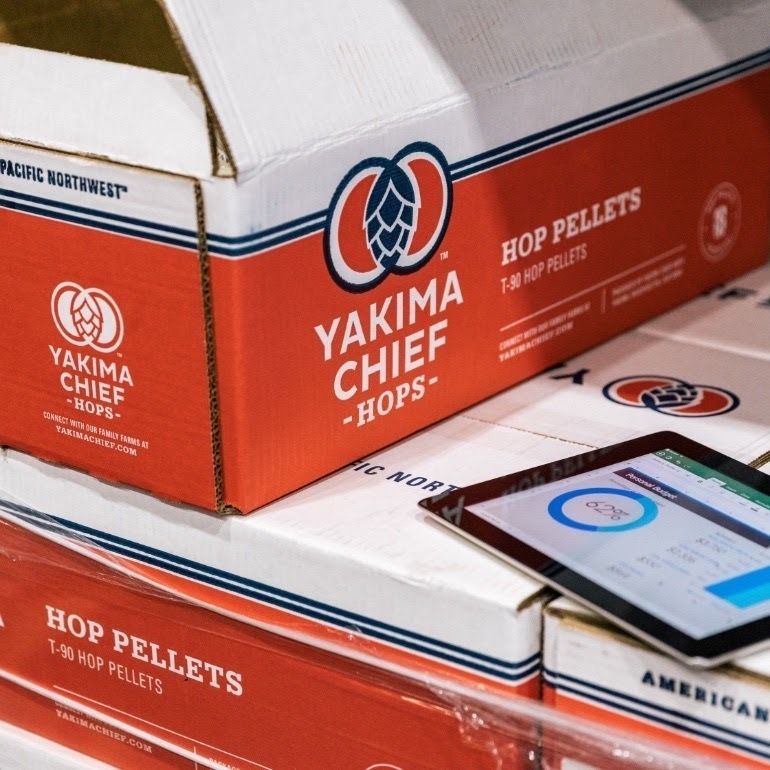Dimensional weight can be one of the most frustrating and confusing parts of running an eCommerce site
Dimensional weight is like the ghost of your middle school math teacher came back to haunt you with the worst word problem imaginable.
If Suzie is mailing a package that is 8x4x2 inches and weighs 8 pounds, and Bobby is mailing a package that is 12x12x8 inches and weighs 2.5 pounds, which one costs $8 less to ship?
Before you rush to find a calculator, an Algebra textbook and a paper bag to hyperventilate into, keep reading.
We’ve created this guide to help answer your frequently asked questions about dimensional shipping rates and dimensional weight for shippers.
First, we’ll take a look at what dimensional weight is and how it’s calculated. Then we will outline how you can use your newfound knowledge of dimensional weight to decrease your shipping costs.
What is Dimensional Weight versus Actual Weight?
Before we get into the details of dimensional weight, first we must understand how it compares to actual weight calculations.
Dimensional weight and actual weight are two ways to calculate the billable weight for a shipment, or the weight used to calculate a shipping rate.
Actual weight is the package’s weight rounded up to the next pound. For example, a package that weighs 17.8 pounds would have an actual weight of 18 pounds.
In comparison, dimensional weight takes into consideration the density of a package. This is the amount of space a package occupies compared to its actual weight.
For a shipment, you will be charged based on one of these weight measurements. Specifically, whichever is greater of the two. So if your actual weight is 18 pounds but your dimensional weight is 16.7 pounds, your shipping rates will be based on that actual weight number.

Dim weight in depth
Dimensional weight, also known as DW or dim weight, is a calculation used by carriers to convert a package’s length, height, and width into a weight figure.
So carriers use these calculations all the time, right? Not so fast.
Some carriers like to have their cake and eat it too. They will use whichever value is larger, the dimensional weight or the weight of the actual package.
For example, a heavy item in a small package will be charged based on its actual weight while a lightweight item in a large package will be charged based on its dimensional weight.
From a carrier’s point of view, they are charging you not only for your package’s weight, but for the space your package takes up in their truck or plane.
What is the dimensional weight formula?
So, what’s the magical formula that helps you converts dimensions into a weight?
Dimensional Weight = (Length x Width x Height) ÷ Divisor
For all numbers, you’ll need to round up to the nearest whole number.
The divisor you’ll use for the box weight is based on the carrier and your rate. We’re taking a look at the divisor you’ll use for measuring the dimensions in inches. The divisor is different for centimeters.
- UPS: the divisor is 139 for daily rates and 166 for retail rates.
- FedEx: the divisor is 139.
- USPS: the divisor is 166 and applies to Priority Mail, Priority Mail Express and Non-Lightweight Parcel Select.
Currently, DIM Weight applies to Priority Mail packages 1 cubic foot or larger shipping to zones 5-9.
The new policy expands the use of dimensional weight and decreases the divisor.
After June, USPS will use a divisor of 166 and will apply DIM Weight to all services except First Class package service, Parcel Select Lightweight, and Flat Rate packages. boxes.
Let’s look at an example using FedEx or UPS’s 139 divisor.
Package Actual Weight: 5 pounds
Dimensions: 12x10x8
Dimensional Weight = (12 x 10 x 8) ÷ 139 = 6.9
The dimensional weight rounds to 7 pounds. Since the DIM weight is larger than the actual weight, the package will be billed for 7 pounds.

Why did carriers start using dimensional weight?
How often have you opened a huge box to find a small item surrounded by a ton of packing material? This is a carrier’s worst nightmare.
The package does not weigh that much, but it’s taking up a ton of space that could be filled by other packages.
Around 2013 as more shoppers moved online, carriers were struggling with the increase in packages. Shippers were paying close attention to their package weights, but not the dimensions of a package. At the time the typical eCommerce package was composed of 40 percent fillers or air. FedEx and UPS trucks which could haul over 45,000 pounds were frequently weighing in under 25,000.
Carriers were already using dimensional weight for express and air services and some international shipping. They expanded it to domestic ground service to charge for space the growing number of e-commerce packages occupied.
What difference can Dim weight make?
Smart shippers need to pay attention to dimensional weight. It can make a huge difference in your shipping costs. Check out this example of how much it would cost to mail a 3-pound package in three different-sized boxes:
| Dimensions | 8x4x2 | 12x10x8 | 16x16x12 |
| Weight | 3 | 3 | 3 |
| DIM Weight (UPS/FedEx) | 1 | 7 | 23 |
| Billable Weight | 3 | 7 | 23 |
| Cost | 12.35 | 17.10 | 39.23 |
*Example costs based on shipping a package from Los Angeles to Dallas using FedEX Ground rates.
Dimensional weight can have a huge impact on your final shipping cost. If you don’t consider dimensional weight, you could easily run into over or under-charges.
Let’s go back to our example above: if you were shipping a 3-pound item and charged the customer shipping based on the actual weight, but shipped it in the medium-sized box, you’ve undercharged the customer for shipping by $4.75.
Another thing to consider is that when you use too large of a package, not only do you pay more based on the dimensional weight, you’re more likely to experience issues with damaged goods and packages. If packages are packed loosely, they are more likely to shift and get damaged in transit. Additionally, you’ll also end up paying more for the actual packaging as larger boxes typically cost more and you’ll need to use more filler material.
How Online Sellers are Affected by DIM Weight Constraints
Here at ShipperHQ, we’ve helped thousands of online sellers streamline their shipping operations. After talking to those merchants, we’ve found that the merchants most affected by dimensional weight constraints sell large but light items – whether those packing boxes are filled with perishables or giant stuffed animals!
But on the other hand, DIM weight has made a difference in how some online sellers do business. Do you remember back when packages had a ton of fillers in them?
These days DIM weight has forced many sellers to be more strategic about packaging, saving our landfills from billions of cubic feet of packing peanuts and other materials.
Read on for how you can save money and the environment with your shipping strategy.

5 tips for reducing costs with dimensional weight shipping
Now that you know what dimensional weight is and how it affects your rates, what can you do to trim your shipping costs? Follow these five tips for reducing your package DIM weight and saving on shipping.
1. Reduce your box sizes
This may seem a little obvious, but the first thing you should do is reevaluate your packaging.
Try to pack items as compactly as possible. If you’re filling half of the box with packing peanuts or airbags, then you’re likely overpaying to ship the item.
Shippers sometimes make the mistake of having too few box sizes to choose from. You may think you’re saving money but not ordering box sizes that you don’t frequently use, but you could actually be paying more if you’re shipping items in a much larger box.
2. Use polybags or padded envelopes when possible
If your items can ship safely in a poly bag or padded envelope, ditch the box.
This is especially helpful for clothing retailers. If a carrier is using dimensional weight, envelopes or polybags will frequently be cheaper than boxes.
If you’re currently shipping with USPS, you might want to consider switching to poly bags or flat-rate envelopes before the postal service expands the use of DIM weight.
3. Pay attention to surcharges
People sometimes assume that if they’re paying for DIM weight, they won’t be charged for oversized packages. It makes sense, right?
You’re already paying a rate that’s based on the space the package takes up, but unfortunately, that’s not the case.
Review your carriers’ rates carefully so you can plan for any oversized package surcharges.
4: Shop for different carriers and rates
The expanded use of dimensional weight by the United States Postal Service is an excellent reminder that you should periodically review your carrier choices and rates.
Shop around and make sure you’re getting the best options.
We’ve launched the ShipperHQ Marketplace to take some of the legwork out of managing your relationship with over 50 shipping carriers and providers.
5: Calculate DIM Weight at checkout
If your inventory includes a lot of variety in the size and weight of products, you’re going to need some help accurately calculating shipping costs at checkout. If you don’t, you’ll end up under or overcharging customers for shipping.
We built ShipperHQ to help make shipping easier and that includes dimensional weight. With ShipperHQ, you can set packing rules and define box sizes to get more accurate rates based on the dimensions of individual products and your packing options.
By comparison, the native shipping calculators on many platforms will default to calculate shipping based only on weight, in which case you’ll end up undercharging for shipping.
If the platform does calculate dimensional weight, it might divide orders into separate packages, or sum the total dimensions of every product in order to get a dimensional weight – both methods will return extremely high shipping costs.
The built-in calculations for dimensional weight might handle one or two items, but as both the items themselves and the number of items in an order increase, it’s more likely the built-in calculations will be significantly skewed.
ShipperHQ’s algorithms match the product dimensions to your box sizes so you get a quote based on the most efficient way to pack and ship an order.
Dimensional Weight in Action: A Case Study

bobbie, Germany’s first digital building materials company, has pioneered a new way for craft professionals, architects, and DIY enthusiasts in Germany to shop since their website launch.
With an expansive catalog ranging from garden and landscaping products, to civil engineering supplies like concrete, bobbie needed a way to calculate shipping rates automatically and accurately.
After searching for a tool with the right capabilities and flexibility to handle bobbie’s intricate backend shipping logic, they came across ShipperHQ.
“We analyzed the market of shipping calculation solutions. Honestly, ShipperHQ was the only choice that could handle our massive and complex freight calculation demands,” said Helene Übelhack, Head of Marketing at bobbie.
By pairing ShipperHQ’s Dimensional Packing, LTL Freight and Shipping Rules, now bobbie can show shipping options and rates instantly.
“Our shipping options are based on product, customer, destination, and can be anything from simple DHL rates, to multiple time slot-based, heavy weight, freight rates with optional forklift, and so on. With ShipperHQ, we hide this complexity from the customer and just show what’s possible for the current cart scenario.”
Looking to improve your shipping margins like bobbie? Explore Dimensional Packing by signing up for a 15-day free trial of ShipperHQ.






